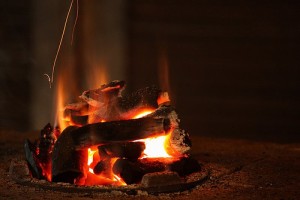 Pollution in the Mongolian capital immensely exceeds Mongolian air quality standards and World Health Organization guidelines, according to a research carried out by the National University of Mongolia.
Pollution in the Mongolian capital immensely exceeds Mongolian air quality standards and World Health Organization guidelines, according to a research carried out by the National University of Mongolia.
Ulan Bator, Mongolian’s capital, is a city where average winter temperatures linger at a penalizing 20 degrees Celsius. For families living in felt huts or gers in the city, the stoves that use black coal and wood to sustain fire is their only source of heat.
However, families are not aware why the city is covered in thick smog and how they have become part of the problem. Narantuya, a housewife, burns two bags of coal and half bag of wood per day to keep her family warm. She said her kids constantly get sick with colds and cough in winter.
Although Ulan Bator’s population consists of just one million people, it is one of the most polluted cities in the world. This elicits increasing concern over escalating health care costs and criticisms over a government scrambling to respond.
Mongolian President Tsakhia Elbegdorj admitted last month that the situation of the city had already reached a ‘disaster’ status. In fact, their pollution levels are among the highest in any urban area in the world, the World Bank said.
Tens of thousands of families living in the ger districts of Ulan Bator have no access to the central heating grid that warms expensive flats downtown.
Narantuya spends 2,500 tugrik a day to warm her felt home. She explained that coal keeps the fire going longer, thus it is cheaper and better to use.
International organizations such as the Asian Development Bank and development agency GTZ of Germany are teaming with local bodies and researchers to build energy-saving ger stoves and make them largely available. However, it is not a simple task.
Program officer for biodiversity conversation at the UN Development Programme, Onno van den Heuvel warns that the effect of the pollution may not be known for decades.

